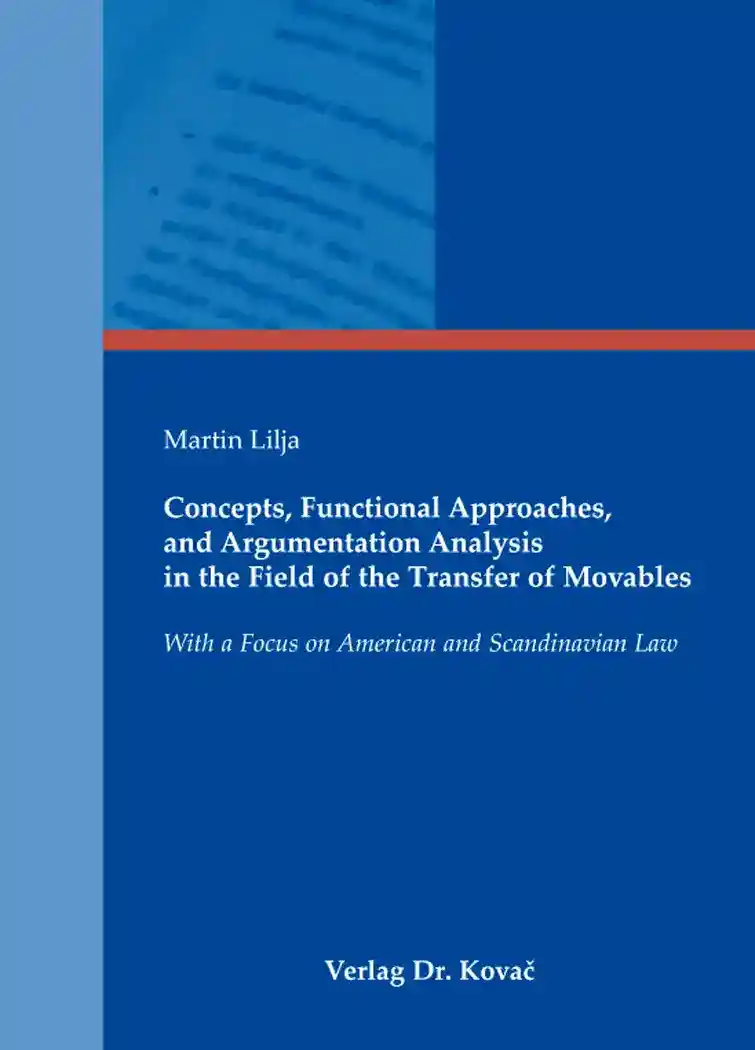Martin LiljaConcepts, Functional Approaches, and Argumentation Analysis in the Field of the Transfer of Movables
With a Focus on American and Scandinavian Law
- in englischer Sprache -
Studien zur Rechtswissenschaft, Band 366
Hamburg 2015, 152 Seiten
ISBN 978-3-8300-8872-1 (Print)
ISBN 978-3-339-08872-7 (eBook)
Zum Inhalt
This book has two perspectives, related to each other. The first perspective analyzes lawmaking on a European level. The overall question is whether the Uniform Commercial Code (U.C.C.) can stand as a functional model or example for Europe. In the recent European discussion on how rules for the transfer of movable property could be designed in an optimal way, it has been suggested by several proponents that a “functional? approach should be applied. It is considered to be advantageous that such an approach does not use concepts like “ownership?, but deals with different issues separately, by way of directly connecting legally relevant facts (requirements) with specific real-life-consequences (observable legal facts), without placing an abstract concept, such as “ownership?, in the middle. In this context, regard may be given to American law: Article 2 of the U.C.C., dealing with sales of goods including sales-related property law matters, was drafted with the aim of applying a “narrow-issue approach? and designing the law in terms of a “step-by-step performance?, thereby overcoming the former law (the Uniform Sales Act) which made a vast range of consequences dependent on the “transfer of title?. This perspective will examine to what extent the U.C.C. approach ultimately complies with the standards set forth by narrow-issue or functional approach theory. This may help assess whether U.S. law can – or should – serve as a model for European lawmaking.
This example may be illustrative because it originates from a jurisdiction that is said to apply a “functional approach? regarding the transfer of movables – keeping in mind that this technique of segmenting the property law discourse is part of the methodological approach suggested in the second part of this publication.
The second part presents a method or model of argumentation analysis in the field of the transfer of movables. It is suggested that the discourse of property law may profit from applying tools developed in the discipline of argumentation analysis, after segmenting the discourse into “functional? conflict situations connecting legal relevant facts with legal consequences directly without the use of concepts. The central aspect of the model of argumentation analysis presented here is thereby based on a structuring of the material functionally. A functional structure is, among others, based on a material without (unnecessary) concepts, which will be dealt with more extensively in the first perspective.
